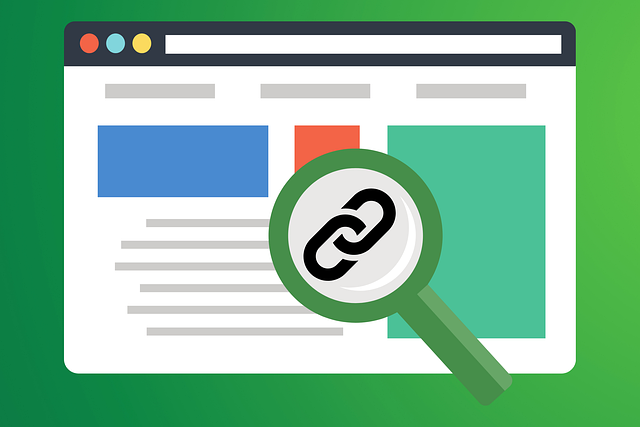Comprehensive SEO Audits analyze websites for keyword optimization, meta tags, site speed, mobile responsiveness, and user experience. Using tools like Google Search Console, SEMrush, Ahrefs, and Moz Pro, these audits uncover issues hindering visibility and engagement, offering actionable strategies to boost rankings and organic traffic. Regular audits ensure continuous improvement, adaptability to algorithm changes, and enhanced online performance.
Comprehensive SEO audits are essential for optimizing your website’s visibility and performance. This in-depth analysis goes beyond surface-level checks, delving into every facet of your site’s on-page elements. From understanding crucial technical aspects to refining content for search engines and enhancing user experience, a well-structured audit is a game-changer.
In this guide, we’ll explore the key components, powerful tools, and best practices to ensure your website passes every test, driving better rankings and increased traffic through effective comprehensive SEO audits.
Understanding On-Page SEO Audits

On-Page SEO Audits are an essential aspect of comprehensive SEO strategies. They involve a detailed evaluation of a website’s individual elements to ensure they align with search engine optimization best practices and are optimized for relevant keywords. This process delves into various components, including content quality, meta tags, headings, URL structure, internal linking, and more.
By conducting thorough on-page audits, marketers and SEO professionals can identify areas of improvement. These might include optimizing content to better match user search queries, enhancing meta tag relevance, or restructuring URLs for improved crawlability. Such audits are pivotal in boosting a website’s visibility, driving organic traffic, and ultimately, increasing conversions by making sure each page is optimized at the fundamental level.
Key Components of an Effective Audit

A comprehensive SEO audit is more than just a technical review; it’s an in-depth analysis that uncovers a website’s potential and identifies areas for improvement. The key components of such an audit ensure a holistic understanding of online visibility and search engine rankings. Firstly, it involves an extensive keyword research to uncover the most relevant terms driving traffic and those that are untapped opportunities. This is followed by an on-page analysis that scrutinizes content quality, optimization of titles and meta descriptions, header tags, internal linking structures, and overall user experience.
Additionally, technical aspects like site speed, mobile responsiveness, schema markup implementation, and any technical SEO errors or issues are evaluated. The audit also delves into the health of backlinks, analyzing their quality and relevance to enhance domain authority and trustworthiness. By combining these elements, a comprehensive SEO audit provides actionable insights for optimizing web pages, improving search engine rankings, and ultimately, driving more organic traffic.
Tools for Comprehensive Analysis

Comprehensive SEO audits require a suite of tools that can dissect a website’s performance and identify areas for improvement. These tools go beyond basic keyword research and on-page analysis, delving into technical aspects, content quality, and user experience. Some popular options include Google Search Console, SEMrush, Ahrefs, and Moz Pro.
Google Search Console provides insights into site performance in the organic search results, while SEMrush and Ahrefs offer detailed backlink analyses and keyword research capabilities. Moz Pro excels in technical SEO audits, identifying crawl errors, broken links, and site structure issues. This combination of tools allows for a holistic view of a website’s SEO health, enabling professionals to conduct thorough comprehensive SEO audits.
Evaluating Technical SEO Aspects

Comprehensive SEO audits go beyond surface-level analysis, delving into the technical underpinnings of a website. These audits evaluate crucial factors like site speed, mobile responsiveness, and structure to ensure optimal performance on search engines. By examining HTML code, robots.txt files, and sitemaps, professionals can identify issues that may hinder visibility or user experience.
Addressing these technical SEO aspects is vital for successful optimization. Improving page load times, ensuring accessibility across devices, and implementing a logical site structure not only enhance user navigation but also signal to search engines the relevance and quality of the content, ultimately driving better rankings and increased organic traffic.
Optimizing Content for Search Engines

Comprehensive SEO audits are a critical step in optimizing your website’s content for search engines. By meticulously analyzing various elements on each page, these audits provide an in-depth understanding of what works and what needs improvement. This process involves evaluating key factors such as keyword optimization, meta tags, header structures, internal linking, and overall readability.
Through this methodical approach, businesses can identify areas where their content falls short in meeting search engine algorithms’ requirements. By addressing these issues, websites can enhance their visibility, attract more relevant traffic, and ultimately boost their online presence, ensuring they stay competitive in today’s digital landscape.
Enhancing User Experience and Engagement

Comprehensive SEO audits don’t just analyze technical aspects; they also play a pivotal role in enhancing user experience and engagement. By evaluating factors like site speed, mobile-friendliness, and ease of navigation, these audits ensure that websites are optimized for modern users. A well-conducted audit can identify areas where improvements can be made to reduce bounce rates and increase time spent on the page, thereby improving key metrics such as conversion rates and user satisfaction.
Moreover, understanding user behavior through tools like heatmaps and session recordings provides valuable insights into how visitors interact with a site. This data helps in making informed decisions about content placement, call-to-action optimization, and overall website design, ultimately fostering better engagement and driving more meaningful interactions.
Tracking and Measuring Audit Results

After conducting a comprehensive SEO audit, tracking and measuring the results is crucial to understanding the impact of your optimization efforts. This process involves setting clear goals and key performance indicators (KPIs) aligned with your business objectives. By utilizing analytics tools, you can monitor website traffic, user behavior, and conversion rates over time.
Regularly comparing audit findings against these KPIs allows for data-driven decision-making. Identify areas where improvements have led to positive changes, such as increased organic rankings or higher click-through rates. This analysis enables you to refine your SEO strategy, prioritize on-page optimizations, and continuously enhance the overall search engine visibility of your website.
Continuous Improvement Strategies

Continuous improvement is at the heart of successful online visibility, and comprehensive SEO audits play a pivotal role in this strategy. These audits provide an opportunity to identify areas for enhancement, ensuring that websites remain optimized against evolving search engine algorithms. By regularly conducting thorough reviews, businesses can stay ahead of the curve, addressing any issues before they impact their rankings.
Implementing strategies based on audit findings fosters a culture of constant refinement. This approach allows for iterative improvements in content optimization, technical SEO, and user experience. As search engines continually update their criteria, adopting this mindset ensures that websites adapt, maintaining or improving their online performance over time.
